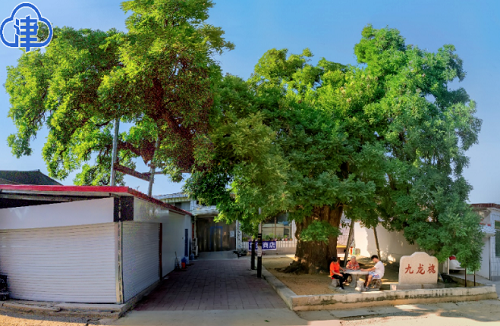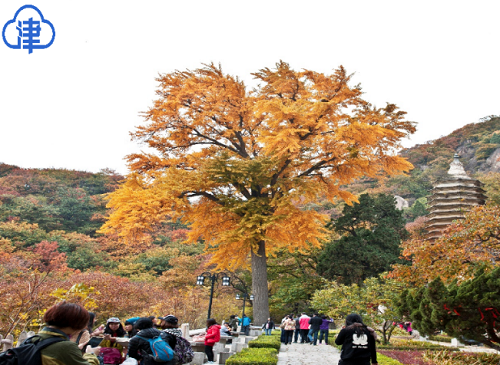Jizhou district, which is rich in forest resources, has many ancient trees. These trees have become popular on the Internet and attracted many people to travel here every year.
According to the staff at the Tianjin Municipal Bureau of Planning and Natural Resources, the result of the second national survey of ancient trees shows that there are 4,639 ancient trees in Tianjin, about 80% of them are located in Jizhou district. One of the important tasks of the Tianjin Forestry Bureau is to protect these venerable trees.
Gao Zhiwei, an agronomist at the Forestry Bureau of Jizhou district, has been dealing with issues of ancient trees for 15 years, paying attention to the survival status and growth environment so as to take measures to protect them. "Jizhou is rich in forest resources, and there are many ancient trees. But the most characteristic ones must be the five trees which have been attracting tourists to travel here," said Gao.
The "king of trees in Tianjin" – Jiu Long Huai

Jiulonghuai [Photo/WeChat account: zhangshangjizhou]
This tree, located in Xujiatai village, was planted during the Tang Dynasty (618-907) and has a history of 1,404 years. The branches are strong and tall, and it takes four or five adults to stretch their arms around the tree. There are nine strong branches on the trunk of the tree, which looks like nine dragons soaring into the sky. Therefore, this tree is called "Jiu Long Huai" by local people, meaning "nine dragon tree". Because of its long history, it is also known as the "King of Trees in Tianjin".
The highest ancient tree—ginkgo tree

The highest ancient tree—ginkgo tree [Photo/WeChat account: zhangshangjizhou]
There are two ancient gingko trees on the east and west sides of Tiancheng Temple in Panshan Mountain, which were planted in the late Jin Dynasty (317-420). Both ginkgo trees have tall and straight trunks, 774 years old and 35-meter-high. In April or May of each year, ginkgo trees would bloom; while in autumn, the color of ginkgo leaves would turn golden, a magnificent sight around the temple.





